Chinese Name: 沙溪古镇 Pronunciation: Shāxī Gǔzhèn
Admission Fee: Free
Service Hours: All day
Occupied Area: 287 square kilometers
Recommended Time for Visit: 6-8 Hours
Location: Southeast Jianchuan County, Dali Prefecture, Yunnan Province, China
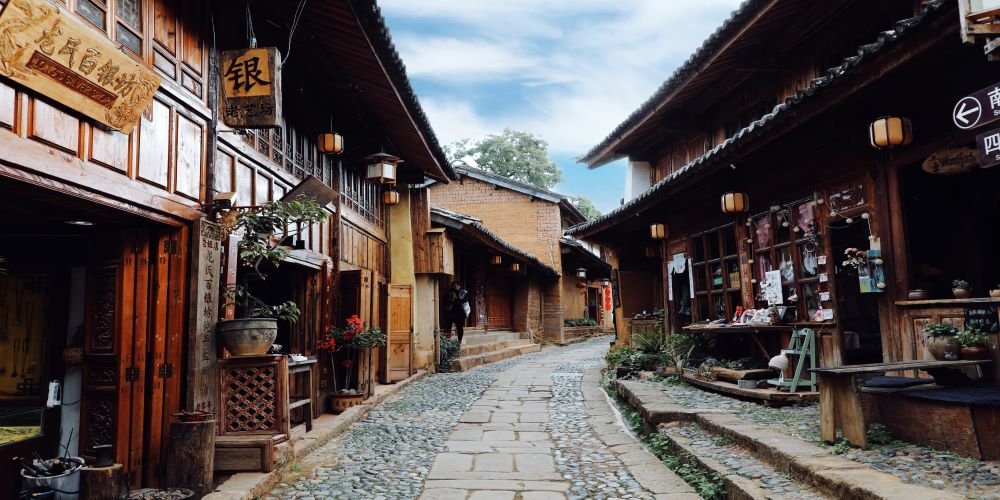
Have you ever been bored with city life and tried to escape noise and crowds? Would you like to enjoy the night sitting by a river and listening to frogs croaking in the rice paddies? Then Shaxi Ancient Town will be a place you should not miss.
As a place once recommended by Lonely Planet, Shaxi is quite different from other commercialized and crowded scenic spots in southwest China’s Yunnan Province. It is still a tranquil and genteel tiny town where visitors can expect idyllic scenery.
Being located between Dali Prefecture and Lijiang Ancient Town, and enjoying a history of more than 2400 years, Shaxi used to be not only one of the birthplaces of bronze products in Yunnan but also the best-preserved caravan oasis along the Ancient Tea Horse Road, a trade route through Yunnan, Sichuan, Tibet, and Indian regions from the 6th century to the 20th century.
Thanks to its remote location, and the good preservation of the local government and international non-governmental organizations, Shaxi remains an ancient town in a real sense or even can be regarded as a place that is most like the “Shangri-La” described in Lost Horizon by the British novelist James Hilton.
The ancient buildings here have been carefully preserved so that the town has become the model of conservation and restoration of historical buildings in China. In 2001, Shaxi was listed in the 101 Most Endangered Sites by the World Monument Fund.
Walking on the cobbled road, visitors can almost hear the clip-clop of horses’ hooves and the shouting of traders. More interestingly, people can even travel around the town by riding a horse just like the traders of hundreds of years ago.
As an ancient town, the history of Shaxi can be traced back to about 2,400 years ago, the Warring States Period (475 BC - 221 BC).
During the Tang (618 - 907) and Song (960 - 1279) Dynasties, the Nanzhao Kingdom and the Dali Kingdom arose in Yunnan, and that’s the reason why Shaxi became more and more prosperous.
Before the Ming Dynasty (1368 - 1644), Shaxi was once called “Shatui”.
For several centuries, Shaxi served as a pivotal stop along the Ancient Tea Horse Road. Besides, the market in Shaxi is regarded as the only surviving example along the ancient trade route.
Now Shaxi is one of the historic towns in China, attracting a large number of visitors from home and abroad every year.
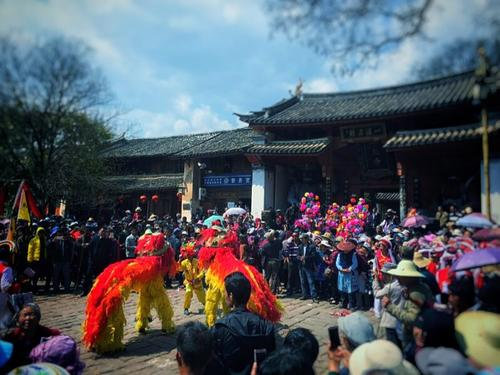
“Taizi”, literally meaning “prince”, refers to Shakyamuni. It is said that when Shakyamuni was the Prince Siddhartha Gautama, he left the palace and wandered through his father’s land to observe the living conditions of common people on the eighth of the second lunar month.
After learning about the suffering of people, he decided to renounce his position and wealth and then founded Buddhism.
Every year, Bai people (an ethnic group in China) in Shaxi dress up in colorful traditional clothes to celebrate Prince Festival in honor of the historical Buddha.
Meanwhile, local boys dress up as Prince Siddhartha and parade around the town while local young men parade with the statues of the Buddha. It is the grandest festival celebrated by Bai people living in Shaxi.
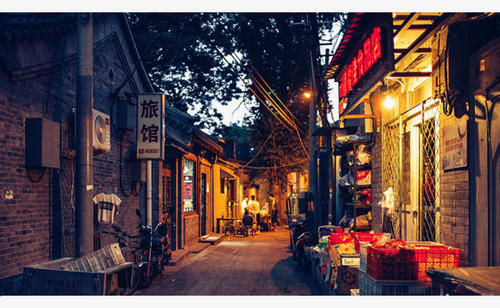
Wandering around the local market is also a great chance to experience the local life. Every Friday morning, the Bai, Yi, Naxi peoples (Chinese ethnic groups) from nearby villages gather in Shaxi to sell and buy necessities.
People can find almost everything at the market, including local specialties, fresh fruits and vegetables, handmade products, traditional Chinese medicine, and other daily necessities.
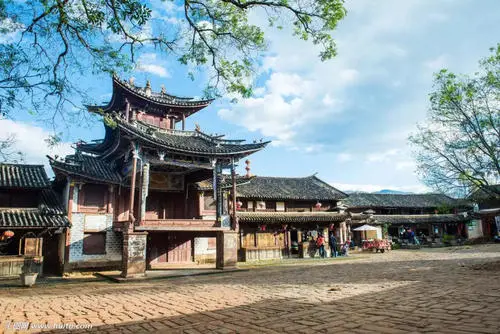
Formerly known as “Nantang”, Sideng Street was built in the late Yuan Dynasty (1271 - 1368). “Si” means “temple”, referring to the Xingjiao Temple on the street, and “deng” means “place” in the language of the Bai people.
It is the principal street of this ancient town as many scenic spots are there, including the Xingjiao Temple, the ancient stage, ancient alleyways, ancient shops, and trees standing there for hundreds of years.
Moreover, the old buildings along the street are typical architectural features of the Bai people and are well preserved.
It is known that the culture of Nanzhao Kingdom and Dali Kingdom was greatly influenced by Buddhism. And as an important town at that time, Shaxi witnessed the spread of Buddhist culture. Therefore, many Buddhist buildings were built in and around Shaxi, and the Xingjiao Temple is one of them.
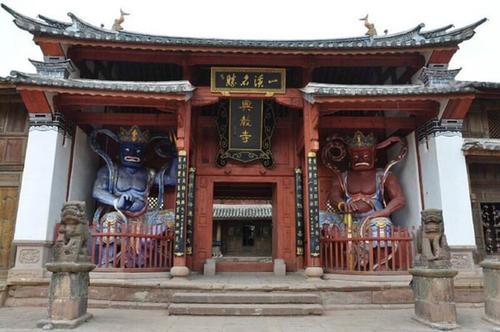
The Xingjiao Temple can be considered the heart of Sideng Street. Built in 1415, the 13th year of the reign of Emperor Yongle (1402 - 1424) in the Ming Dynasty, the temple has stood for nearly 600 years. What’s more, it is the largest, the most distinctive, and the only surviving Azhaliism Buddhist (Vajrayana Buddhist) temple of the Bai People in China.
With exquisite building techniques, the main hall of the temple inherits the architectural style during the Song and Yuan Dynasties and shares the features of buildings of the Bai people as well as the temples of Tibetan Buddhism.
Now there are 12 Buddhist murals of the Ming Dynasty in the main hall. Greatly influenced by the painting style of Central China, these murals are also of local features and can be called the gem of the art of the Bai ethnic minority in ancient times.
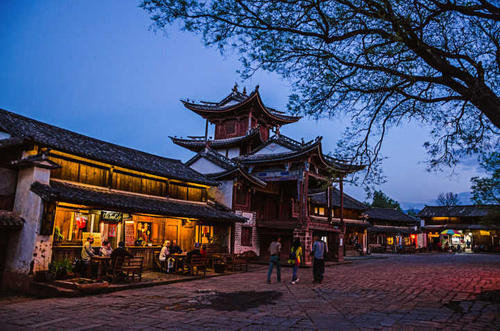
As a landmark on Sifang Street, the stage in the central district of Sideng Street, was a wooden platform built during the reign of Emperor Jiaqing (1796 - 1820) of the Qing Dynasty. In ancient times, all kinds of local operas were performed on the stage from day to night.
It is a three-storey building complex with cornices, saddle roofs, and elaborately painted ceiling and pillars. Anyone who sees it for the first time will marvel at its exquisite craftsmanship.
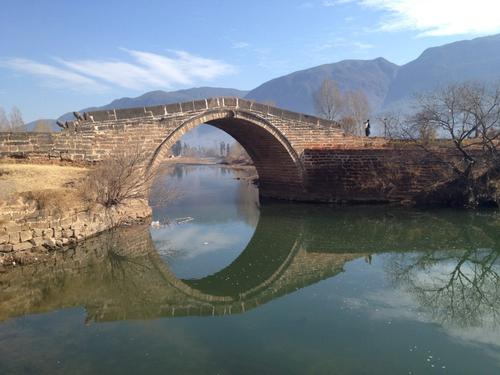
Yujin Bridge was built during the reign of Emperor Kangxi (1662 - 1722) of the Qing Dynasty and suffered damage and collapse over the past centuries. Luckily, in 1931, people in Shaxi raised funds for the reconstruction of the ancient bridge.
Built with columns and slab stones, Yujin Bridge is six meters high, 35.4 meters long, and five meters wide. The bridge, which witnessed the changes of Shaxi, used to be one route that farmers and businessmen have to go across.
Built during the late Qing Dynasty and the early Republic of China (1912 - 1949), Ouyang Courtyard consists of one typical traditional courtyard(a courtyard surrounded by three houses and one screen wall facing the gate of a house) of the Bai people and one adjacent courtyard of horse stable.
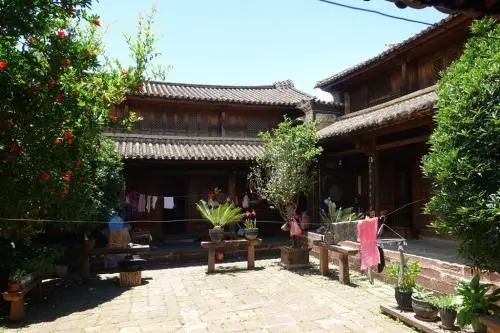
The whole complex is of a unique layout, which connects courtyard houses and the horse stable ingeniously and gives full play to the function of each part. There are “first-class rooms” for caravan leaders, including a small theater stage, secret tunnels, and strongboxes.
The whole complex is decorated with wood carvings and colorful paintings, presenting exquisite craftsmanship of the Bai people. As an important cultural heritage in Shaxi, it is praised by international and domestic visitors as a “Five-Star Caravan Inn” on the Ancient Tea Horse Road.
As a place with tranquil pastoral scenes, Shaxi has been a travel destination attracting people from all over the world. Impressed by its beauty, many people believe that a visit to Shaxi is a once-in-a-lifetime experience and some even settle down there.
A couple once visited the Sheltered Mercy Nunnery in Shaxi to pray to the Songzi Niangniang(Taoist fertility goddess, the Maiden Who Brings Children) for a baby, and soon after, their prayer was answered and the wife became pregnant. Therefore, they decided to give their thanks by using all their money to restore the temple.
People living in Shaxi have their own stories related to this tiny town. Some quit their jobs in big cities and started businesses there. Some stayed there for months to learn techniques of wood carving. So, what will your story be?
Shaxi enjoys an agreeable climate and is surrounded by mountains, which means it is neither too cold in winter nor too hot in summer. Visitors can expect different beautiful scenery all year round. Despite that, it is still highly recommended to visit the town from February to May, when it is warm and sunny.
If you would like to see what the market in Shaxi looks like, the best day for you to visit is Friday.
Yujin Bridge → Sideng Street → Sifang Street → Ancient Stage → Xingjiao Temple → Ouyang Courtyard
Take the intercity bus from Kunming to Jianchuan at Kunming West Bus Terminal, get off at Jianchuan, and take the minibus from Jianchuan to Shaxi.
Take the intercity bus from Dali to Jianchuan at Xiaguan North Bus Terminal of Dali, get off at Jianchuan, and take the minibus from Jianchuan to Shaxi.
Take the tour bus going directly to Shaxi at the South Gate of Dali Ancient City.
Take the intercity bus from Lijiang to Jianchuan at Lijiang Bus Terminal, get off at Jianchuan, and take the minibus from Jianchuan to Shaxi.
Chinese: 请带我去沙溪古镇。English: Please take me to Shaxi Ancient Town.
If you go to Shaxi Ancient Town from the center of Dali Prefecture (Grand Bay View International Hotel Dali), it takes about 140 minutes (about 430 yuan).
If you go to Shaxi Ancient Town from Dali Airport, it takes about 140 minutes (about 430 yuan).
If you go to Shaxi Ancient Town from Dali Railway Station, it takes about 140 minutes (about 430 yuan).
